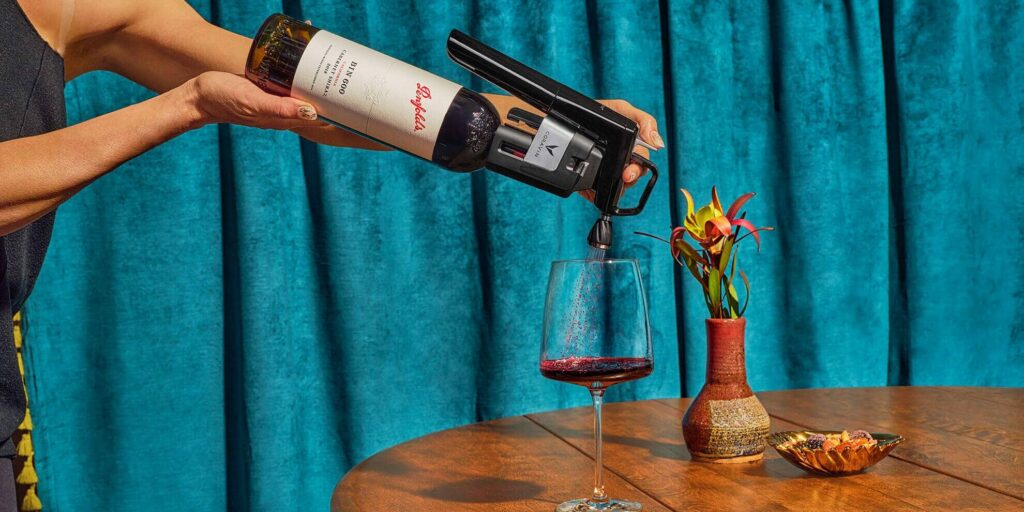When opening a bottle of wine, it's important to know how to store it properly. Oxygen transforms wine, sometimes in just a few hours. Good wine storage management preserves aromas, texture and enjoyment.
Why does wine spoil so quickly after opening?
Once the cork has been removed, the wine comes into contact with the air. This contact triggers an oxidation process. This transformation alters the wine's aromas, acidity and balance. For an open bottle, prolonged exposure leads to a loss of freshness. Reds lose their structure, whites their liveliness. Some wines become flat or take on a vinegary taste. Simple gestures are needed to slow down this phenomenon.
Use a vacuum cap to preserve aromas
The vacuum stopper is one of the most effective tools for protecting an opened bottle. A manual or electric pump extracts the air from the neck of the bottle. This limitsoxidation and prolongs wine conservation for up to 4 or 5 days, depending on the grape variety. This accessory is accessible and easy to use. It is equally suited to red, white and rosé wines.
Keep the bottle refrigerated, even for reds.
Temperature plays an essential role in wine preservation. Cold temperatures slow down chemical reactions. Placing the open bottle in the refrigerator helps preserve its freshness. It's best to take red wines out of the fridge an hour before drinking, to bring them up to the right temperature. This method works well for young wines to be drunk quickly.
Choosing top-of-the-range preservation systems

Some hobbyists use more advanced devices. Inert gas systems such as argon replace oxygen in the bottle. This technique is designed for great wines. It avoids any alteration of aromas for several weeks. These solutions are ideal for enthusiasts who want to enjoy an open wine over time without compromising its quality.
Adapting the storage method to the type of wine
Each wine reacts differently to oxidation. Structured red wines are better able to withstand air. A full-bodied wine can be kept for three days with a simple cork. White and rosé wines are more fragile. An opened bottle of white wine quickly loses its aromas. It should be drunk within two days. Sweet or syrupy wines hold up better. Their sugar acts as a natural preservative.
Mistakes to avoid with an opened bottle
Many wine lovers make mistakes when it comes to storing wine. Leaving the bottle open unprotected accelerates degradation. Putting the cork back on adds impurities. Keeping the bottle at room temperature aggravates oxidation. Exposure to light also accelerates aging. Avoid decanting into a carafe if the wine is not to be consumed immediately.
How long can you keep an opened bottle?
Shelf life depends on the wine and the methods used. In general :
- A young red can be kept for 3 to 5 days with a vacuum cap.
- Advanced or fragile red, 2 to 3 days maximum
- A dry white should be kept for 2 to 3 days in a cool place.
- A sweet or syrupy wine can stay good for up to 7 days.
- Sparkling wines like champagne lose their bubbles quickly. They should be drunk within 24 hours, using a special pressure cork.
Practical tips for optimizing home storage
It's a good idea to note the opening date directly on the label or cork. An electric cellar with a preservation zone set between 10 and 14°C can also prolong the life of opened bottles. Wine lovers can group wines to be finished together in a dedicated area. This avoids forgetting an open bottle for too long.
Preserving without betraying the soul of the wine
Wine conservation must never alter the winemaker's intention. The aim is to preserve the wine's aromatic expression and balance. An open wine must remain pleasant to the very last drop. It's not simply a question of keeping it longer, but of prolonging the taste experience without compromise.
If you enjoyed this article, don't hesitate to read the following one "Greek wines: a little-known wine heritage"which may also be of interest to you!





